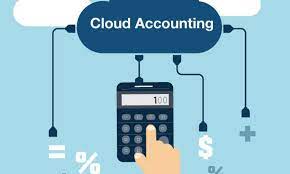While creating a bank account, there are various aspects to consider, including the annual percentage yield (APY). APY, which stands for annual percentage yield, is a technique to calculate how much your money will grow over time as you receive interest on your deposits. So, how does APY get calculated? And how do you receive the best interest rate on banking products? In this guide, you’ll learn everything you need to know about APY in banking, including how it is calculated and how it works.
What is APY?
In banking, the annual percentage yield (APY) represents the total amount of interest earned on a deposit account over a year, provided no funds are added or withdrawn during that time. An annualized rate is used to express the annual percentage yield. When it comes to banking, the APY contains your interest rate as well as the frequency with which interest is compounded, which is the interest you earn on your principal plus the interest on your earnings. As you can see, APY incorporates a number of elements to provide you with a comprehensive picture of your earning potential in your bank account.
How is APY in Banking Calculated?
In banking, APY can be calculated using a formula. To use the calculation, you’ll need to know the interest rate for the account in question. But then again, why is APY in banking calculated?
This is because the method will help you estimate how much your money will grow over time. This is critical if you have specified financial goals.
APY Formula:
The APY formula looks like this:
APY = (1 + r/n)n + 1
In this formula, r represents the interest rate on a bank account, and n is the number of periods over which interest is compounded.
There are numerous ways to run these figures, including using a spreadsheet, but the simplest method is often to utilize an APY calculator. Remember that you won’t need to compute APY very often because your bank or credit union usually provides this information.
Comparing APY Between Investments
Understanding the APY in the banking system allows you to compare various savings options. Assuming you had $1,000 to put down, you can choose between a 0.55% high-yield savings account and a 0.75% 12-month CD. The savings account allows you to make additional monthly deposits, whereas the CD does not.
Therefore, which is the better investment in terms of APY? The CD has the higher APY of the two.
But, keep in mind that you normally cannot add money to a CD after the initial investment. In the following instance, your CD would earn $7.50 in interest over a year if interest is compounded daily.
If you choose the savings account with the lower APY, you put $100 into it each month. If interest is compounded every day, you would have earned $12.03 after one year. Even though the CD has a higher APY, if you add money to the high-APY banking savings account, you’ll earn more interest over time, and it’s something to consider when comparing savings choices.
Is APY Variable?
Depending on the kind of deposit banking account you choose to go for, the APY can be variable or set. The APY on a savings or money market account is frequently changeable. This implies that it is linked to an underlying benchmark rate.
If the benchmark rate rises or falls, your APY may follow. Savings account rates are frequently adjusted in response to changes in the federal funds rate. Banks may reduce the APY provided to savers if the Federal Reserve lowers interest rates.
The APY you earn on CDs is usually fixed. A CD is a time deposit account, which means you agree to keep your money in the account for a specific amount of time. In exchange, you will receive a set interest rate rather than a variable one until the CD matures.
If you decide to roll over the CD when it matures, the new rate you earn may move higher or lower depending on the benchmark rate. Nonetheless, there are some exceptions to this rule. Certain banks provide “raise your rate” CDs or “bump-up” CDs, which allow you to boost your rate and APY during the term of your CD; however, this is not usual for conventional CD accounts.
What is the difference between APR and APY?
In general, APY refers to the amount of interest you will earn while banking, whereas APR, relates to the amount of interest you will pay while also banking.
The annual percentage yield (APY) is the percentage rate of the total amount of interest earned on a savings account or investment over a year, based on the interest rate and compounding frequency.
APR is the annual percentage rate that reflects the cost of borrowing over a year—that is, how much you pay to borrow money each year. Look for high APYs on bank accounts to earn more interest on your money, and low APRs on loans, credit cards, and other borrowed money.
Dividend Rate vs. Annual Percentage Yield (APY)
Credit unions are non-profit, member-owned institutions that provide earnings to members as dividends rather than interest.
To calculate dividend earnings, use the following formula:
A = P (1 + rt)
- A represents the total amount of money accumulated after n years, including interest.
- P denotes the main amount (your initial deposit or your initial credit card bill)
- r denotes the annual dividend rate (as a decimal)
- t denotes the number of years (period) during which the sum is placed
The formula for an account with a $10,000 balance and a 1% dividend rate would look something like this:
$10,001 = $10,000 (1 + 0.0001*1)
APY represents your potential dividend earnings over a year depending on the dividend rate and compounding frequency.
How does Compound Interest Work?
Compounding happens on a regular basis, frequently daily or monthly. Interest compounded daily is more profitable than interest compounded monthly.
Unless you’re dealing with significant sums, the difference is usually too minor to be concerned about, yet every little bit adds up. For example, $100,000 in a 2.00% APY account yields $2,020.08 when interest is compounded daily, $2,018.44 when interest is added monthly, and $2,000 when interest is compounded annually in one year. (For additional information, see our compound interest explainer.)
When looking for a new savings account or CD, a high APY should be a top goal. The higher the interest rate, the faster your money will increase. And you should look into how often that rate is compounded – certain accounts may allow you to earn a little bit more because they compound daily rather than monthly.
What Does Annual Percentage Yield (APY) Mean for Bank Accounts?
There are several types of financial products that provide a return, including:
- Interest-bearing checking accounts
- Traditional savings accounts
- High-yield savings accounts
- Money market accounts
- Certificates of deposit
APY can inform you how much your money could grow in a year at a glance.
In general, the higher the annual percentage yield (APY) on an interest-bearing account, the better. As a result, APY, along with fees, minimum deposit requirements, and other features, is a key consideration when opening a new savings account, money market account, or another interest-bearing account.
How To Find the Best APY
If you want to emphasize growing your earnings over time, you should look for the best APY savings account. Obtaining the best APY requires some preliminary study to evaluate different banks and bank accounts.
How to Find the Highest APY for Savings Accounts:
Knowing where to hunt for the best APY savings account is the first step. This usually entails determining whether to open a savings account at a regular bank, credit union, or internet bank.
Because they have reduced administrative costs, online banks tend to provide higher APYs to savers than brick-and-mortar banks. Credit unions also provide competitive APYs for their members.
Consider the following when comparing savings account APYs at online banks:
- How that account meets your requirements
- Whether or whether the APY is flat or tier
- What fees you’ll have to pay
Banks can offer a single APR for a savings account regardless of balance. Therefore you may get the same APY on a $1,000 balance as someone with a $100,000 balance.
Yet, some banks have a tiered earning structure, rewarding individuals with larger balances with a greater rate. In addition, some banks take the reverse approach, offering a greater APY on balances below a particular level.
It’s also vital to assess what, if any, trade-offs you’re making when it comes to bank fees. If you receive a higher APY but are required to pay a large monthly maintenance cost to keep your savings account active, the interest you earn may be offset.
Another thing to be careful of is introductory APYs. Banks may provide a higher promotional APY for the first year your account is open, then cut it to a lesser APY after that. If you come across a savings account with an appealing APY, make careful to investigate if the rate is permanent or only for a limited time.
How To Find the Highest APY for Checking Accounts:
If you want to earn interest on your checking account, you may have to do some research. High-yield checking accounts are not as widely available as high-yield savings accounts. These may be available in traditional banks, but they are usually reserved for customers who have greater amounts or are ready to pay higher fees to earn interest.
Online banks may provide high-yield checking accounts. You won’t have branch access, but by banking online, you could earn the best APY on checking while also paying fewer fees or having lower minimum balance restrictions.
Consider daily withdrawal and deposit limitations, check-writing limits, mobile banking access, and ATM access when comparing checking account APYs. Giving up convenience to earn a higher APY may not be worth it in the long term.
Why do Banks do APY?
They practice it because APY is intended to assist consumers in comparing bank accounts. Simply, the higher the APY, the more money you can earn and the faster your bank balance will grow.
Is APY Paid Monthly?
APY is paid in fixed increments. Some APYs, for example, are paid daily, whereas others are paid monthly or annually.
Can I Withdraw Money from APY?
The Atal Pension Yojana (APY) rules state that once the subscriber reaches the age of 60, they are eligible to withdraw from the program and begin receiving their annuity. However, the Subscriber may leave APY before becoming 60 years old under certain conditions.
How do you Calculate Monthly Interest on APY?
An interest function is calculated monthly by dividing the yearly rate by 12, as there are 12 months in a year. This process requires converting from a percentage to a decimal. Example: Let’s pretend your APR or APY is 10%.
What Banks Pay the Highest APY?
Here are the best savings account interest rates:
- Popular Direct – APY: 4.40%
- CIT Bank – APY: 4.05%
- Bread Savings – APY: 4.00%
- Citibank – APY: 3.85%
- Marcus by Goldman Sachs – APY: 3.75%
- Synchrony Bank – APY: 3.75%
- Citizens Access – APY: 3.75%
- Barclays Bank – APY: 3.60%
Bottom line
The annual percentage yield (APY) on your bank or investment account indicates how much interest you will receive based on the frequency of compounding. The brilliance of compounding interest is that you don’t just earn interest on the cash you deposit; you also earn interest on accumulated interest, which can exponentially raise your amount.
While looking for a new account, APY isn’t the only thing to consider. Ask about fees such as monthly maintenance and administrative fees, which can eat into your revenue. Before signing up, make sure you understand the whole cost of the product by knowing the APY and reading the fine print on the account.
Related Articles
- APY: Meaning, How It Works, and Calculated
- THE ANNUAL PERCENTAGE YIELD: How It Works With Your Savings Account
- What Are SHORT-TERM INVESTMENTS: Definition, Examples, and Banks
- WHAT IS APR: How it works
- SIMPLE AND COMPOUND INTEREST: Difference, Formula and Examples






